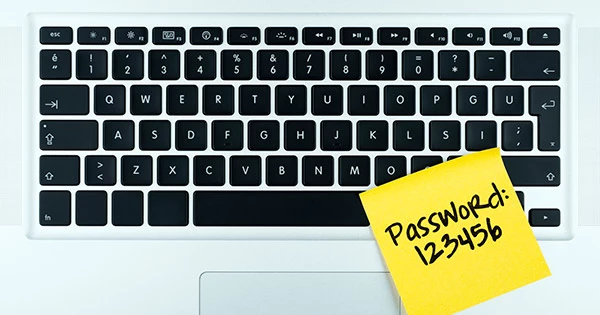7 Pro Tips for Bulking up Password Security

Trustwave Research Reveals Cybersecurity Risks Threatening Patient Lives in Healthcare. Learn More
Get access to immediate incident response assistance.
Get access to immediate incident response assistance.
Trustwave Research Reveals Cybersecurity Risks Threatening Patient Lives in Healthcare. Learn More

In an era of advanced security controls, passwords are among the most primitive of measures we employ every day to protect sensitive data.
Yet, passwords remain as widespread as ever - and the bad guys know this. Trustwave SpiderLabs researchers have found that weak passwords contribute to roughly a third of all breaches.
Still, the beat goes on. Year after year, business users continue to rely on default and easily crackable passwords, and with the rise of "Internet of Things" devices, this trend will only worsen. Despite their inherent vulnerability and the fact that momentum is building to replace them with something more resilient, the future of passwords remains bright.
We asked Trustwave SpiderLabs Security Consultant Garret Picchioni - who recently showcased the password cracking tool that our penetration testers use during client engagements - why passwords are such a problem.
"End-users do everything they can to game the system and get around complexity policies when it comes to creating passwords because they view them as an inconvenience," Garret said. "And an attacker doesn't need to crack everyone's passwords. It only takes one to get that initial foothold into the environment, and from there an attacker can pivot to data that actually matters. End-users will typically think they don't have access to anything sensitive so it doesn't matter if their account gets compromised. This, in theory, is true. However, it gives an attacker the opportunity to migrate to a system that does have the information they're seeking"
Knowing they are far from extinct, here are seven tips for better protecting passwords and keeping accounts secure.
Add complexity: Our researchers have determined that a password with eight characters could be cracked within just one day using brute-force techniques. It would take the same method hundreds of days longer to crack a 10-character password, and even longer if it also includes symbols, numbers and mixing uppercase and lowercase.
Use passphrases: Believe it or not, a phrase (such as "GoodLuckGuessingThisPassword") that is very easy for the user to remember - but perhaps lacks complexity in the form of special characters - is actually much stronger overall.
Change passwords frequently: Passwords should be changed every 60 to 90 days, depending on the sensitivity of the account (generic versus elevated privilege). And don't forget to avoid using the same password across multiple accounts.
Salt and hash: While the combination sounds like something you might do in the kitchen, IT administrators should use unique, random "salts" when "hashing" stored passwords, whereby a piece of unique, random data is combined with each password before the hash is calculated.
Implement strong password policies: Yes, password policies are incredibly important, but often aren't used to their full capacity. The reason being is that complexity policies, specifically in Windows, don't take into account the context of a password, such as identifiers from the company, a company product, the city in which the company or the local sports team. Unfortunately without a custom solution, most environments are at the mercy of, for example, Microsoft's password complexity policy in Active Directory.
Audit passwords: Companies need to perform password audits to determine where the weak links are in companies. Often times, the weakest link are the non-tech-savvy users, which are considered soft targets for attackers.
Consider two-factor authentication: This technology supplements passwords by providing a second form of verification. Thus, if a user's password is compromised, the second-factor (such as a token or a code sent to your phone) acts as another layer of defense.
Dan Kaplan is manager of online content at Trustwave and a former IT security and editor.
Trustwave is a globally recognized cybersecurity leader that reduces cyber risk and fortifies organizations against disruptive and damaging cyber threats. Our comprehensive offensive and defensive cybersecurity portfolio detects what others cannot, responds with greater speed and effectiveness, optimizes client investment, and improves security resilience. Learn more about us.
Copyright © 2025 Trustwave Holdings, Inc. All rights reserved.